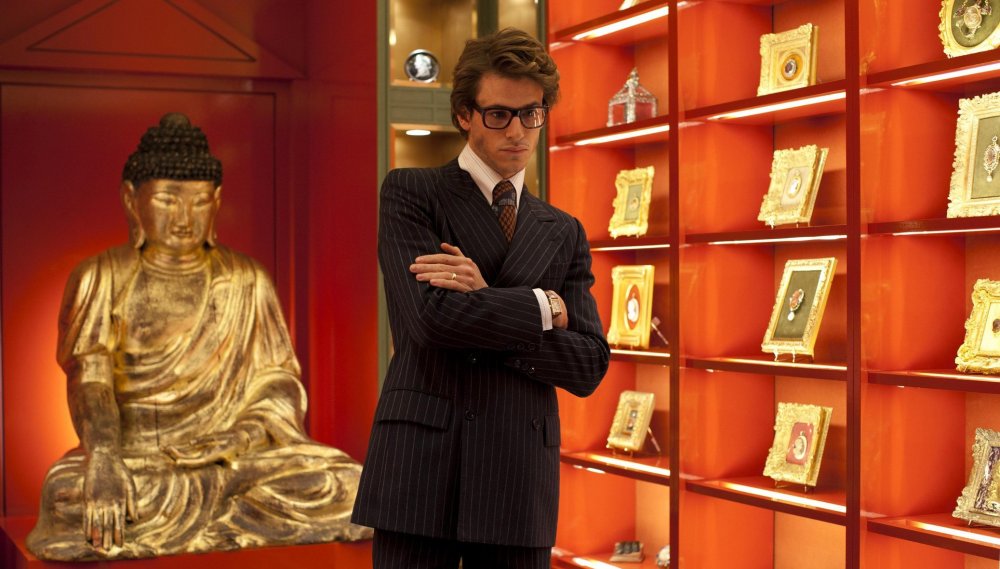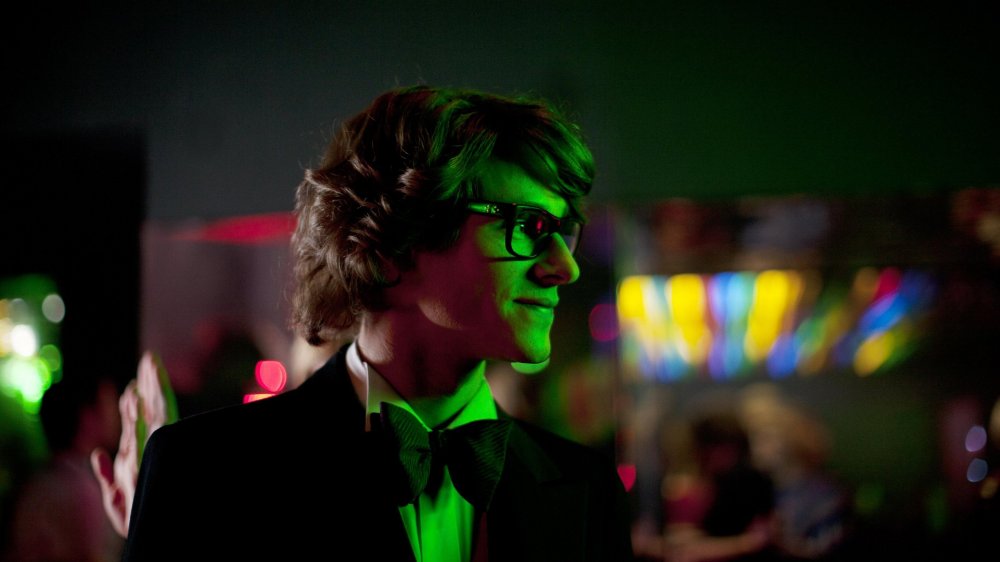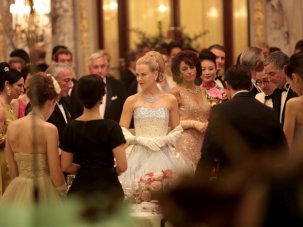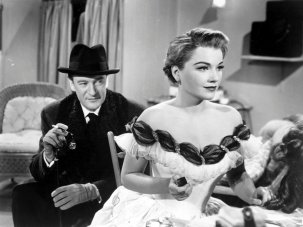In their thrillingly open-ended and anachronistic detail, the impressionistic flourishes of House of Tolerance (2010) suggested that director Bertrand Bonello could take his cinema in any number of surprising directions. And while the French filmmaker’s follow-up, Saint Laurent – one of the more high-profile international selections at this year’s Cannes Film Festival – does indeed push his talents down unexpected paths, it does so in a slightly counterintuitive manner that, perhaps inevitably, it cannot fully reconcile with his typically ornate formal gestures.
A fictionalised retelling of the rise of Yves Saint Laurent, the film covers a ten-year span in the late fashion designer’s life, roughly 1967-1977. Like House of Tolerance, this biopic is a lithe, primary-accented, sympathetic depiction of a fading ideology, though in contrast to its predecessor’s disarmingly psychedelic vision of prostitution at the turn of the 20th century, Saint Laurent takes a more literal, comprehensive approach to its portrayal of countercultural transition.
The fluid, intuitive progression of Bonello’s breakthrough feature is also jettisoned for a far more linear and constrictive structure, in keeping with the arc of a traditional biopic. The irony is that the film largely abjures the dramatic extremes of more typically dynamic biopics.

Despite the film’s historical infrastructure, Bonello still concerns himself primarily with the aural and visual nuances of his medium, and befitting its subject, Saint Laurent is a seductive, often hypnotic article of sensuality for the senses. The female form, and the way bodies interact with and are often commodified for their surroundings, are constants. When, in one of the film’s best sequences, the screen is split between runway models descending an ornate stairwell and newsreel images of concurrent wartime atrocities, political protests and the May 1968 riots, the division between the outside world and the designer’s self-edifying lifestyle is pronounced to most damning effect.
Such aesthetic pleasures keep Saint Laurent from buckling to outright convention. Bonello continues to prove himself a master of marrying the moving image to music. In one early scene a blonde Chanel model is framed at a low angle, eyes closed, swaying in enraptured motion to Creedence Clearwater Revival’s I Put a Spell On You – and in its infectious, transformative energy it is nearly the equal of the celebrated Nights in White Satin sequence in House of Tolerance.
Later, in another moment set in a night club, Saint Laurent (played with a committed stoicism by Gaspard Ulliel) catches the eye of the moustachioed Jacques de Bascher (Louis Garrel) from across the room. Bonello stages the sequence like a dance of optical seduction, both for the viewer (led by a floating camera pan from wall to wall and back again) and for the two future lovers, who communicate here solely via eye contact. It’s one of only a handful of scenes dedicated to Laurent’s sexuality, otherwise depicted in rather discreet, understood, everyday fashion.

A majority of the second half of the film focuses on Laurent’s addiction to prescription pain pills and his reflections on life from an older vantage point. As with many of its characters’ actions, not much is made of these choices, portrayed as events in a comparatively unruffled chronology (Saint Laurent wouldn’t pass on until 2008). Much of the narrative is given over to quiet, seemingly inconsequential moments of conversation or intimacy.
Bonello has cited the influence of Martin Scorsese’s true-life fictionalisations, particularly Casino (1995), but Saint Laurent lacks the headlong momentum of even of those films’ most sedate moments. Rather, its demeanour and formal qualities are more reminiscent of Luchino Visconti’s late-period chamber pieces – particularly in its closing stretch, where an ageing Laurent (now played by Helmut Berger) is seen reminiscing about his past life and loves.
In a late scene where Laurent is asking about his (lack of) influence on a newer generation of artists, a young man suggests in a somewhat placatory tone that “perhaps Yves Saint Laurent has become interplanetary.” It’s a reminder that great artists evolve before they endure, and no matter this film’s more earth-bound qualities, that Bonello still has ample opportunity for both.
-
The Digital Edition and Archive quick link
Log in here to your digital edition and archive subscription, take a look at the packages on offer and buy a subscription.
















